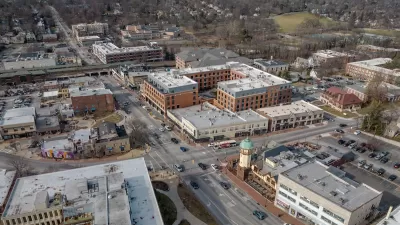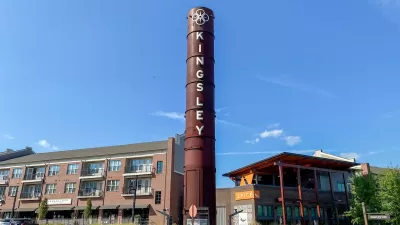When corporations move out of the suburbs, they leaving behind largely unprofitable corporate campuses. Loss of property value and tax revenue follow in the communities they left.

Past decades have seen a trend of major corporations moving their headquarters away from suburbs and small cities and toward larger cities or, in some cases, remote work environments. "Suburban business parks are as outdated and obsolete as fax machines," writes David Bernstein in an article tracking 'big empties,' the "sprawling, once-trendy corporate campuses left behind in the suburbs as companies increasingly relocate to urban centers."
Developing technologies enabled companies like Kmart, McDonald's, Motorola Solutions, and Kraft Heinz to leave their corporate campuses, says Bernstein. It's no longer necessary for all employees to work from a central office. The emptiness of once-booming business centers has consequences for the communities in which they stand. Bernstein traces examples of unoccupied corporate campuses that, without tenants, lose property value and tax revenue leaving local government to pick up the slack.
The vacant campuses now face one of two futures: continued vacancy or demolition. In the case of an AT&T campus that has lost more than $6 million in value over the past five years, plans are being developed to build a 'metroburb,' complete with retail, restaurants, office space, and housing in its place.
FULL STORY: The Big Empty: How Corporate Headquarters Have Abandoned America’s Suburbs

Alabama: Trump Terminates Settlements for Black Communities Harmed By Raw Sewage
Trump deemed the landmark civil rights agreement “illegal DEI and environmental justice policy.”

Planetizen Federal Action Tracker
A weekly monitor of how Trump’s orders and actions are impacting planners and planning in America.

The 120 Year Old Tiny Home Villages That Sheltered San Francisco’s Earthquake Refugees
More than a century ago, San Francisco mobilized to house thousands of residents displaced by the 1906 earthquake. Could their strategy offer a model for the present?

In Both Crashes and Crime, Public Transportation is Far Safer than Driving
Contrary to popular assumptions, public transportation has far lower crash and crime rates than automobile travel. For safer communities, improve and encourage transit travel.

Report: Zoning Reforms Should Complement Nashville’s Ambitious Transit Plan
Without reform, restrictive zoning codes will limit the impact of the city’s planned transit expansion and could exclude some of the residents who depend on transit the most.

Judge Orders Release of Frozen IRA, IIJA Funding
The decision is a victory for environmental groups who charged that freezing funds for critical infrastructure and disaster response programs caused “real and irreparable harm” to communities.
Urban Design for Planners 1: Software Tools
This six-course series explores essential urban design concepts using open source software and equips planners with the tools they need to participate fully in the urban design process.
Planning for Universal Design
Learn the tools for implementing Universal Design in planning regulations.
Clanton & Associates, Inc.
Jessamine County Fiscal Court
Institute for Housing and Urban Development Studies (IHS)
City of Grandview
Harvard GSD Executive Education
Toledo-Lucas County Plan Commissions
Salt Lake City
NYU Wagner Graduate School of Public Service





























